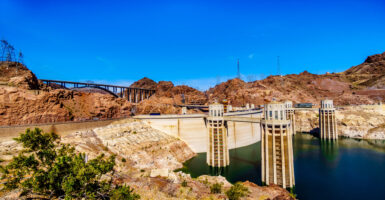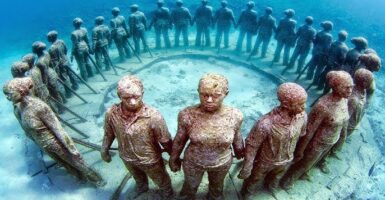20 Rare Geological Formations You Won’t Believe Exist
In an age where we can virtually explore any corner of Earth through our screens, it’s easy to think we’ve seen it all. Yet Mother Nature keeps surprising us with geological masterpieces that look more like alien landscapes or artistic installations than natural formations.
Let’s venture into Earth’s most spectacular geological oddities – places where nature flexes its creative muscles and reminds us that reality can be stranger than science fiction. These aren’t Photoshopped images or movie sets – they’re real places shaped by years of Earth’s artistic experimentation.
The Giant’s Causeway (Northern Ireland)
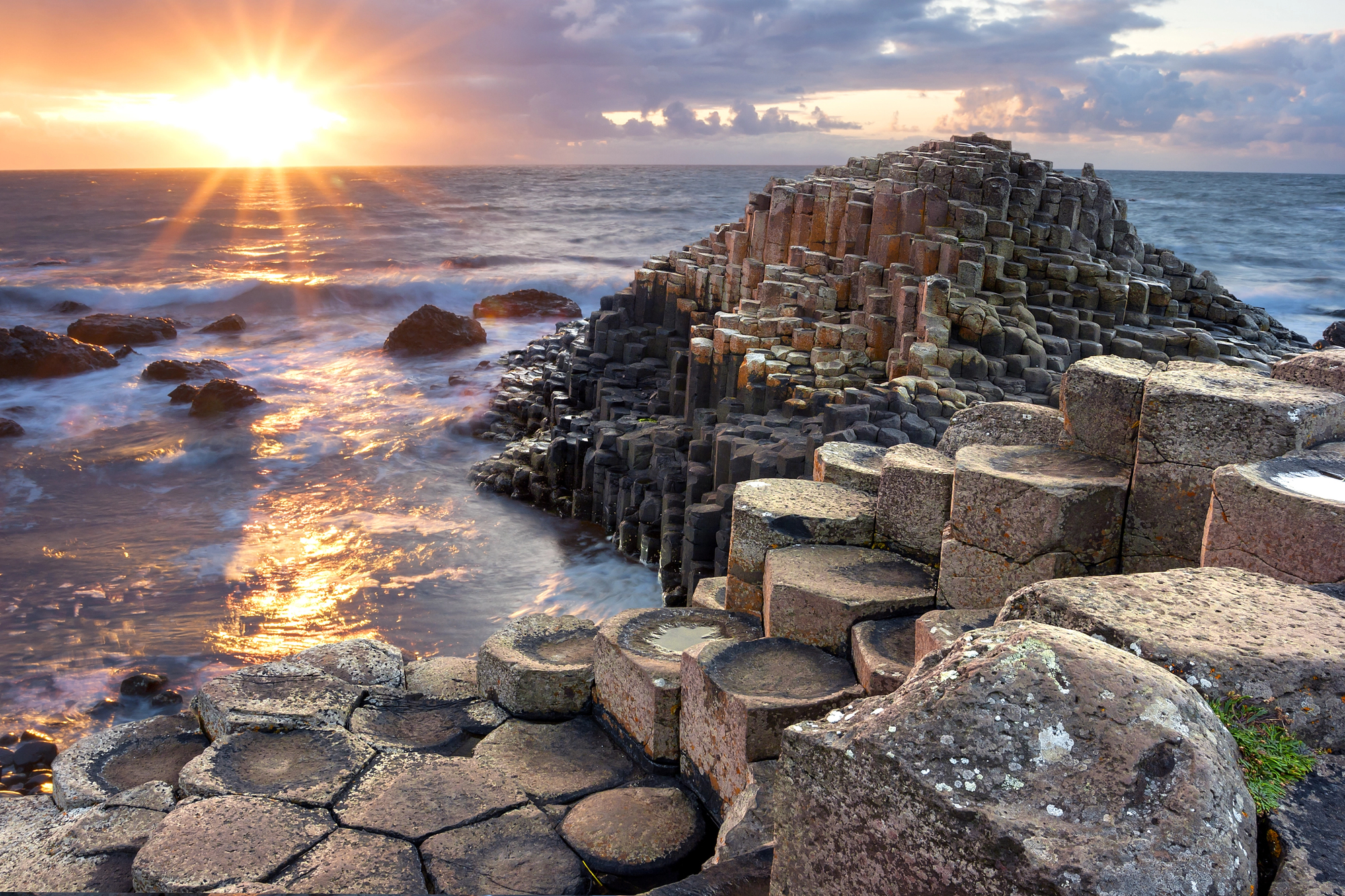
When nature decides to play geometric games, you get 40,000 interlocking basalt columns forming perfect hexagons. Local legend claims giants built it, but the real story involves ancient volcanic activity and something called columnar jointing – though the giant story might be easier to explain to tourists.
The formation dates back about 60 million years, created when intense volcanic activity forced molten basalt through chalk beds. As the lava cooled rapidly, it contracted and fractured in a distinctively hexagonal pattern, much like mud cracks in a dried puddle but on a massive scale.
The columns range from tiny 15 cm specimens to towering 12-meter giants, with most having precisely six sides. Scientists have found that this hexagonal pattern is the most efficient way for cooling lava to crack, proving that nature was into mathematical optimization long before we were.
Sailing Stones of Racetrack Playa (USA)
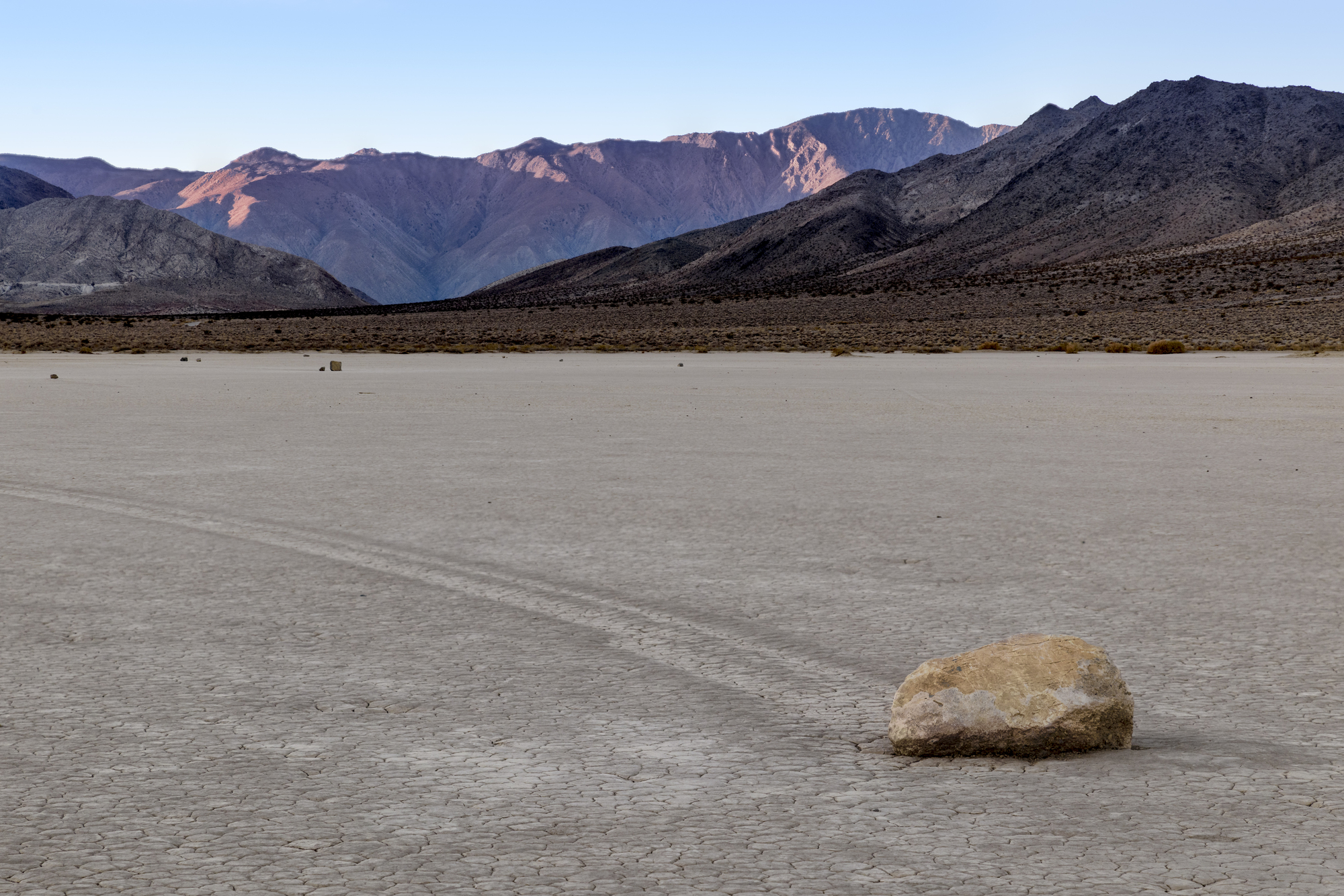
In Death Valley’s Racetrack Playa, rocks weighing up to 700 pounds mysteriously sail across the desert floor, leaving long trails in their wake. For decades, no one had caught them in the act – until scientists finally solved the mystery in 2014.
These “sailing stones” move thanks to a perfect combination of rain, ice, wind, and sun. When the playa floods and overnight temperatures drop below freezing, thin sheets of ice form around the rocks.
As morning temperatures rise and winds pick up, these ice sheets break apart and push the rocks across the muddy surface, creating their distinctive trails. Each rock’s path is unique, with some traveling over 1,500 feet and others making complete circles.
The phenomenon requires such specific conditions that the rocks might move once every two or three years – making this one of nature’s rarest shows.
Like Go2Tutors’s content? Follow us on MSN.
Blood Falls (Antarctica)
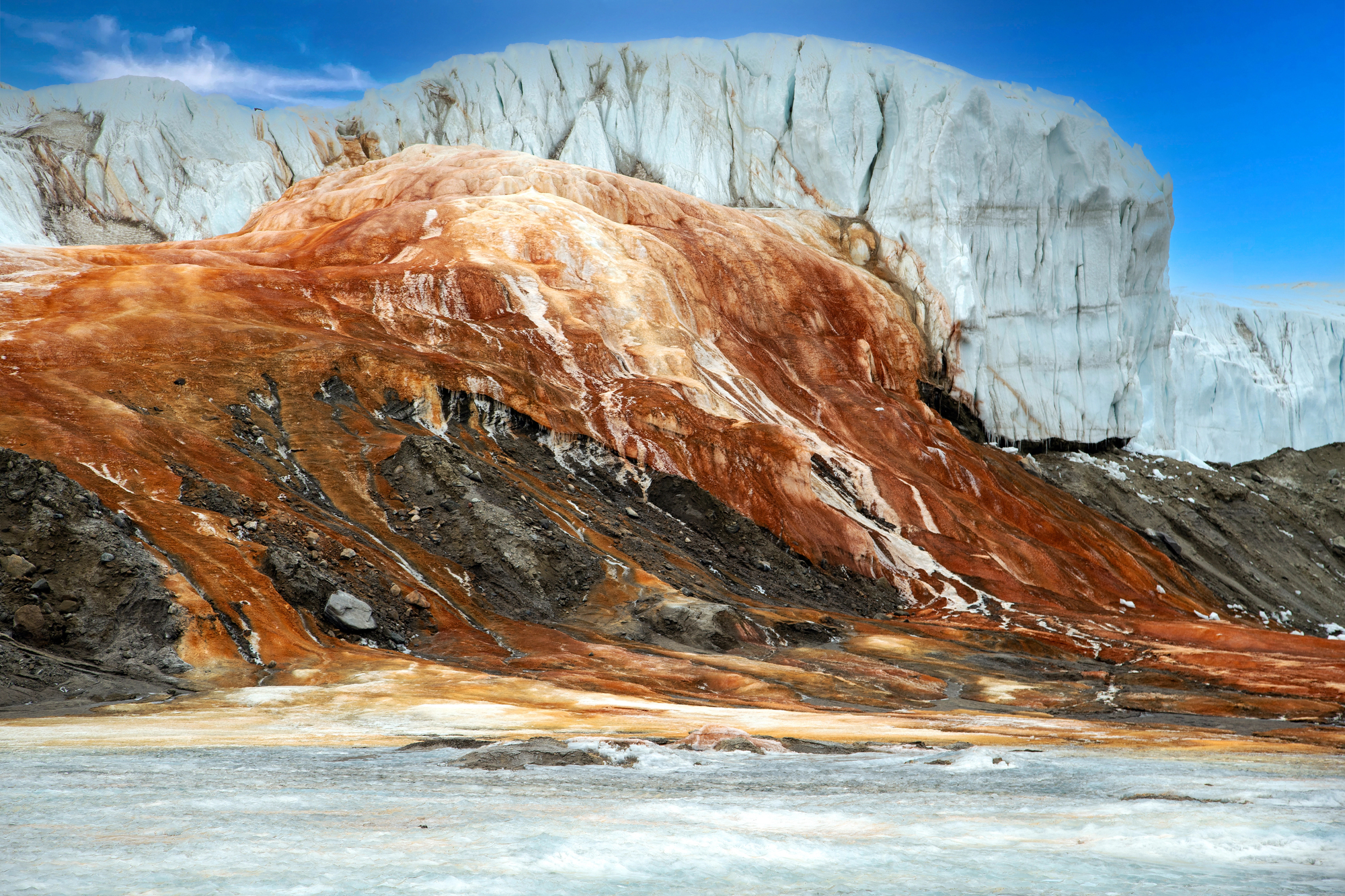
Imagine a five-story waterfall flowing blood-red onto a glacier’s pristine white surface. That’s Blood Falls, where iron-rich hypersaline water from an ancient underground lake creates one of Earth’s most dramatic color shows.
The falls flow from Taylor Glacier, stained crimson by iron oxide, but the real story lies beneath. The water source is an ancient seawater lake sealed under the glacier for nearly 2 million years.
This subglacial lake contains ancient microbes that have evolved to survive without oxygen or sunlight, metabolizing sulfates and iron for energy. When the iron-rich water contacts air, it rusts, creating a striking blood-red color.
It’s like finding a time capsule from Earth’s past that happens to bleed onto the ice.
The Door to Hell (Turkmenistan)
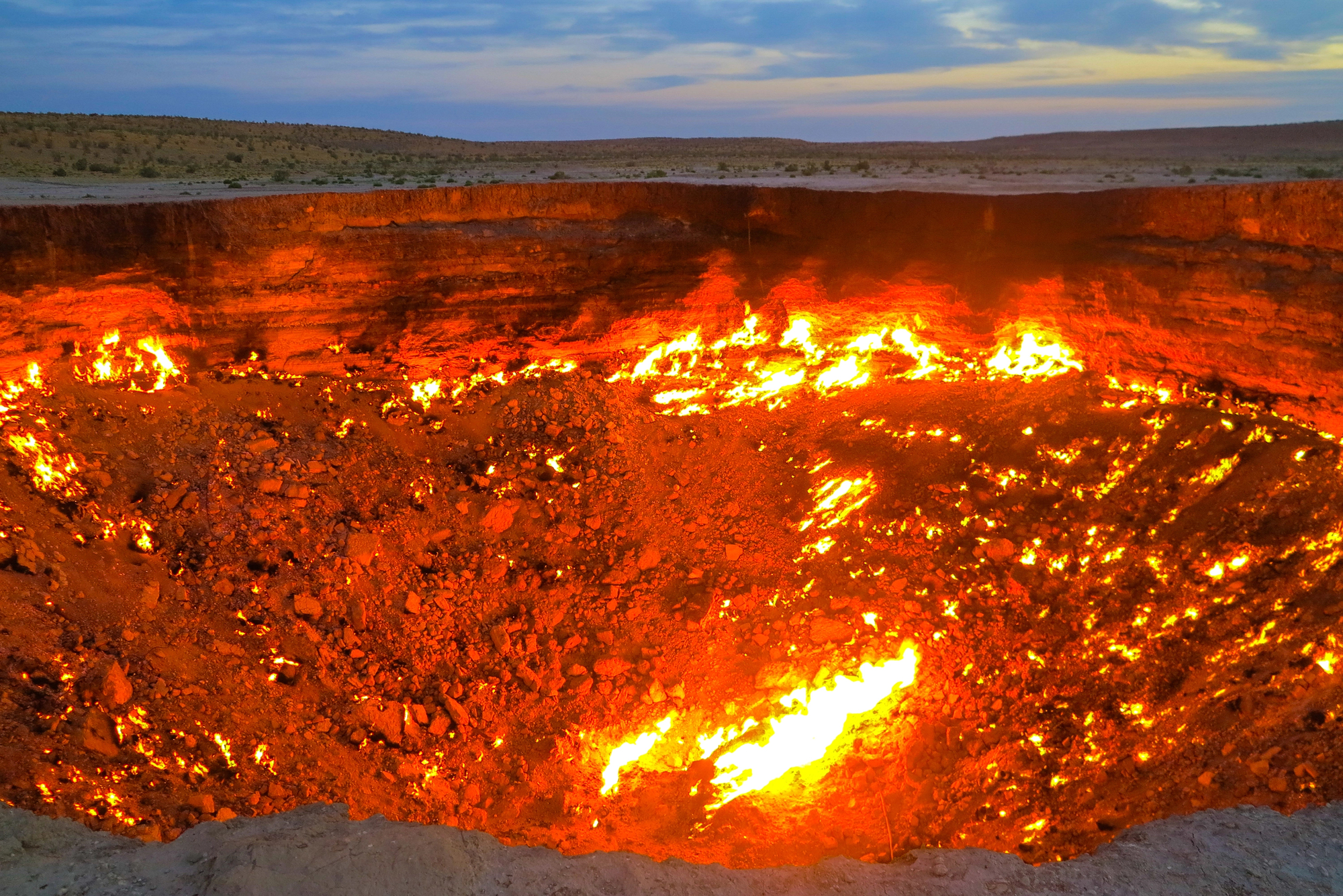
This 70-meter-wide crater has been burning continuously since 1971 when Soviet geologists accidentally drilled into a cavern filled with natural gas. Rather than risk the toxic gas spreading, they set it on fire, expecting it to burn out in a few weeks.
More than 50 years later, it’s still going strong. Located in the Karakum Desert, the Darvaza Gas Crater (its official name) burns so brightly it can be seen for miles at night.
The surrounding ground is hot enough to melt plastic and the air shimmers with waves of heat. Scientists have found unique bacteria thriving in its extreme temperatures, suggesting that if life can exist here, it might survive in similar conditions on other planets.
Local tour guides call it “The Door to Hell,” though it’s more like Earth’s longest-running barbecue.
The Wave (USA)
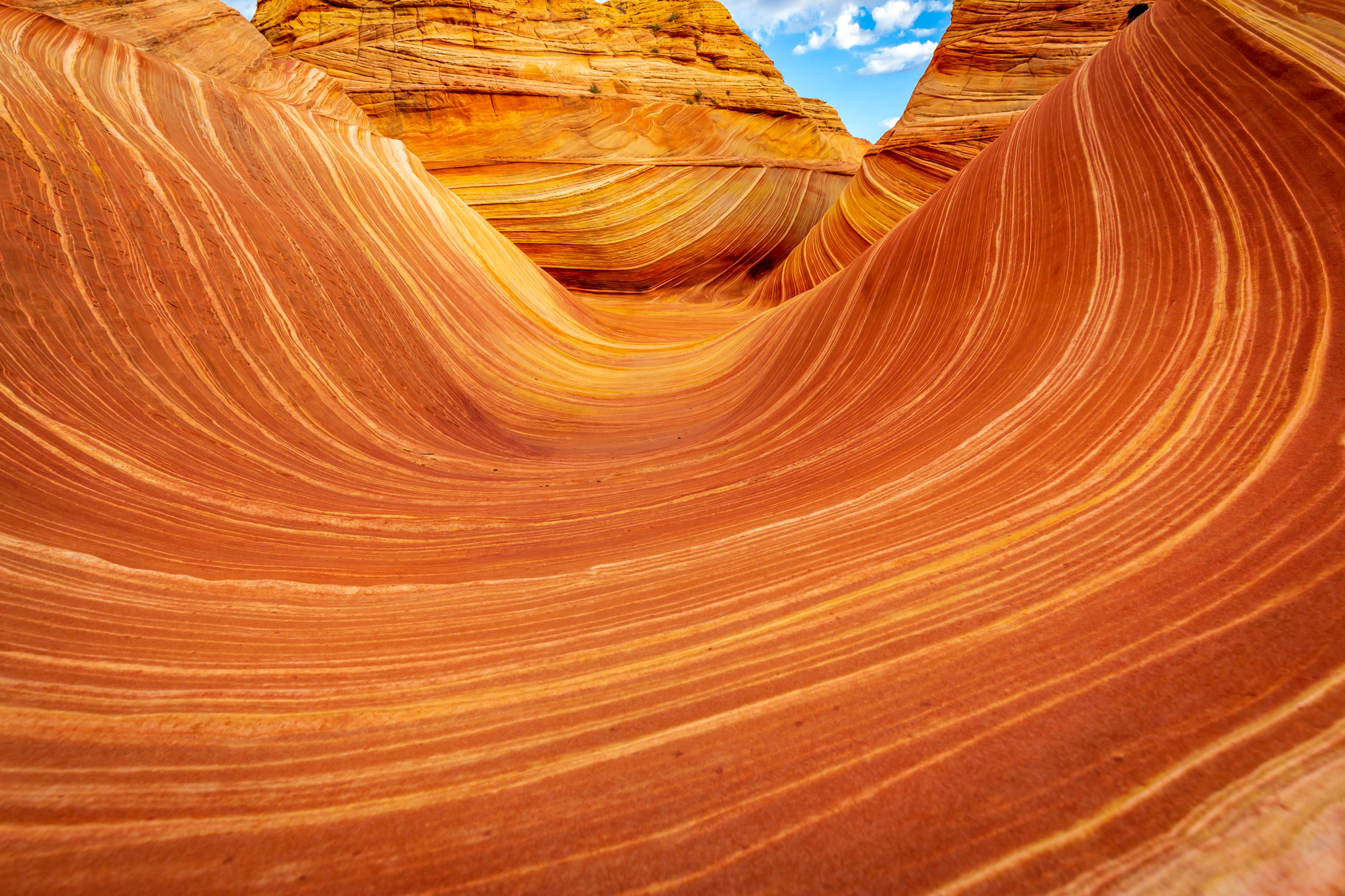
Hidden in Arizona’s Vermilion Cliffs National Monument, this undulating sandstone formation looks like a frozen wave caught mid-break. The swirling patterns of red, pink, yellow, and white tell a 190-million-year story of dune deposits.
Access is strictly limited to 64 people per day through a lottery system, making this one of the most exclusive geological attractions in the world. The distinctive wave pattern formed when ancient dunes were compacted and hardened into stone, then eroded by wind and water over millions of years.
Different mineral deposits created varying colors – iron oxides for red, manganese oxide for black, and limonite for yellow. The result is nature’s version of a psychedelic painting that happens to be millions of years old.
Like Go2Tutors’s content? Follow us on MSN.
Cave of Crystals (Mexico)
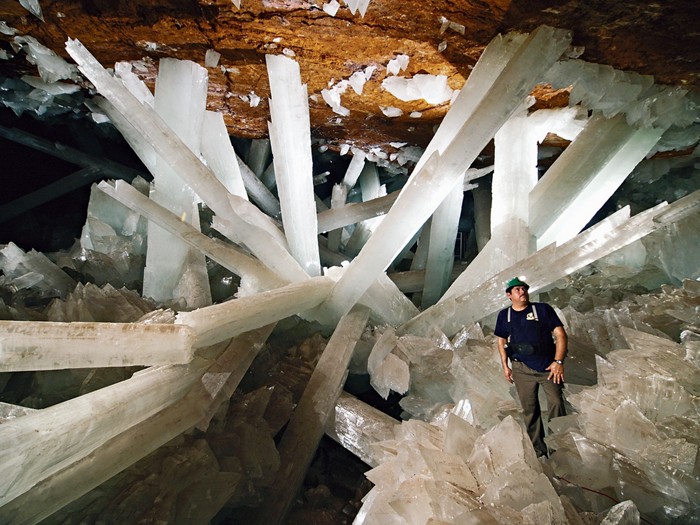
Beneath the Chihuahuan Desert lies a cave filled with crystals up to 39 feet long and 55 tons in weight. These selenite beams look like Superman’s Fortress of Solitude but are entirely natural formations.
The cave maintained a consistent temperature of 58°C (136°F) and 90-100% humidity for 500,000 years, allowing the crystals to grow to massive sizes. The conditions are so extreme that visitors must wear specialized cooling suits and can only stay for short periods.
Before its accidental discovery during mining operations in 2000, the crystals grew in perfectly stable conditions for half a million years. It’s like finding a geologist’s jewelry box if that jewelry box was the size of a cathedral.
Zhangjiajie Forest (China)
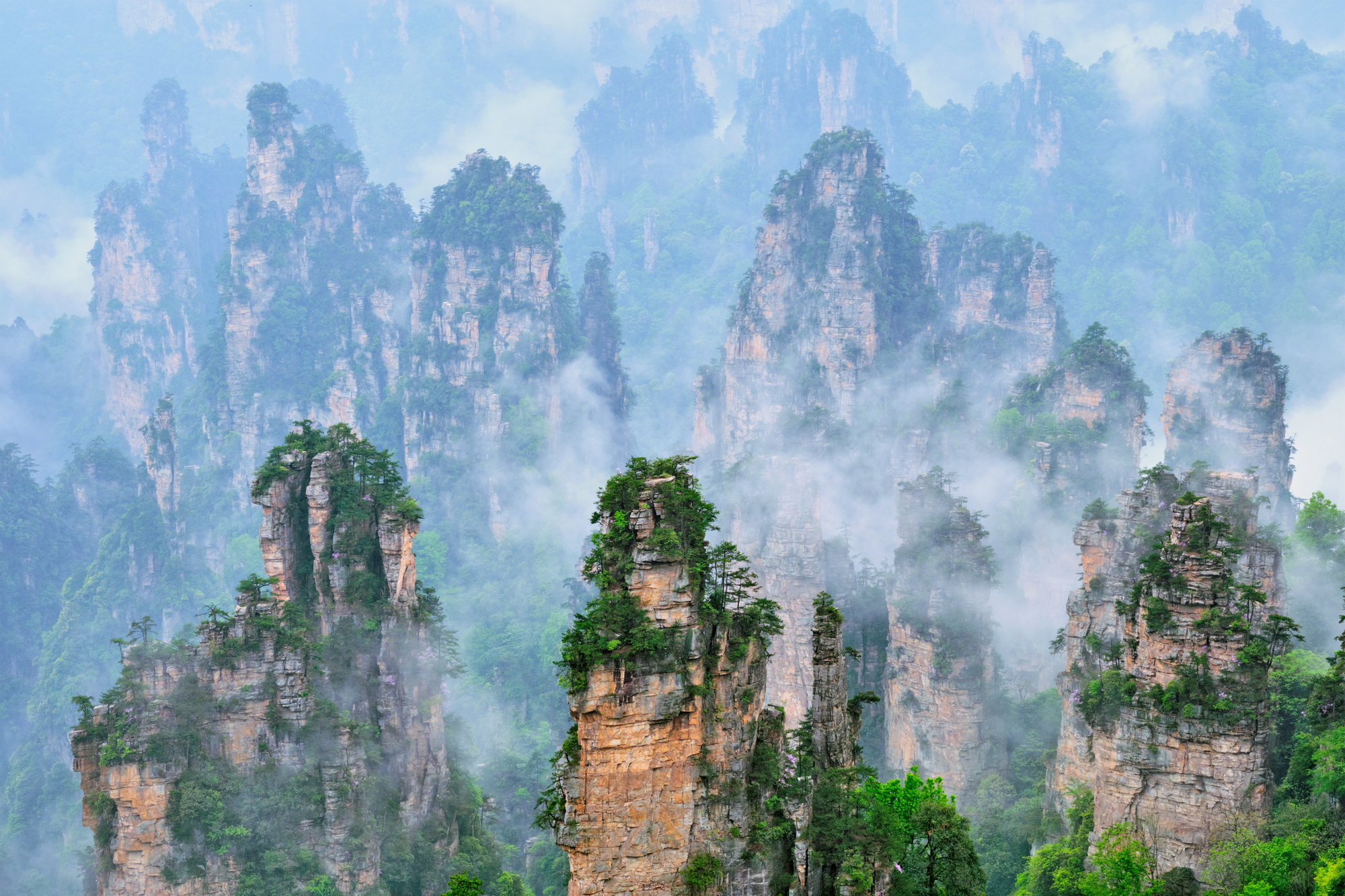
These towering sandstone pillars inspired the floating mountains in Avatar, but they’re very real. Some reach heights of over 3,500 feet, creating a stone forest that seems to defy gravity.
The formations began as part of a large ocean floor during the Silurian Period, about 380 million years ago. Layers of quartz sandstone were worn away by physical and chemical erosion, leaving behind these isolated pinnacles.
The process continues today – water seeps into cracks, freezes, and expands in winter, gradually splitting the rock. The local climate often fills the valleys with fog, making the pillars appear to float in the mist, just like their cinematic counterparts.
Marble Caves (Chile)
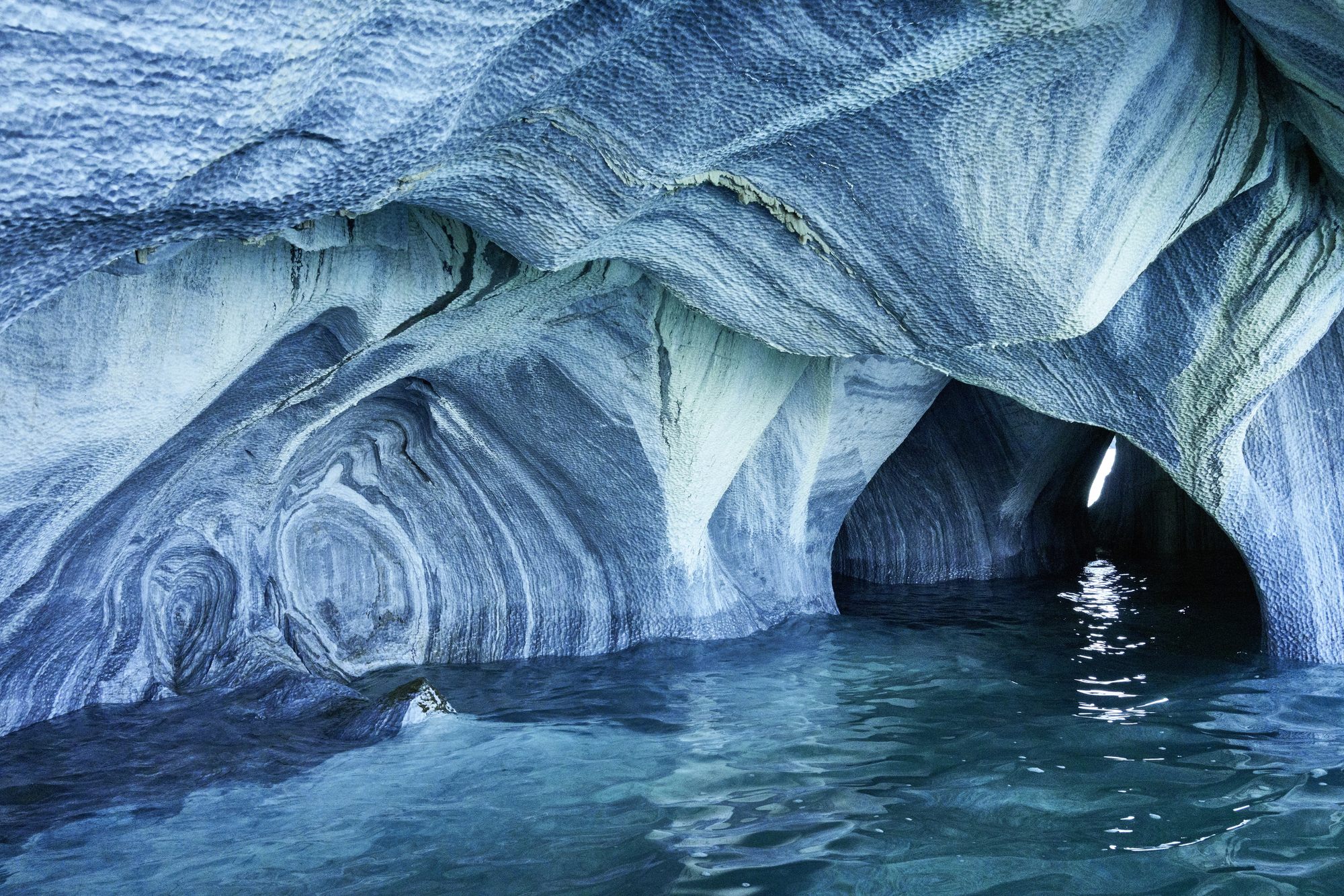
These swirling marble caverns, reflected in the turquoise waters of Lake General Carrera, look like a watercolorist’s dream come true. The patterns and colors change with the seasons and water levels.
Formed over 6,200 years of wave action eroding the marble, these caves represent one of the most beautiful examples of differential erosion in the world. The blue water comes from glacial melt, and its color intensity varies with water levels and seasonal changes.
The marble itself contains various swirling patterns of blues, whites, and greys, created by mineral impurities in the original limestone before it was transformed into marble by heat and pressure.
Like Go2Tutors’s content? Follow us on MSN.
Chocolate Hills (Philippines)
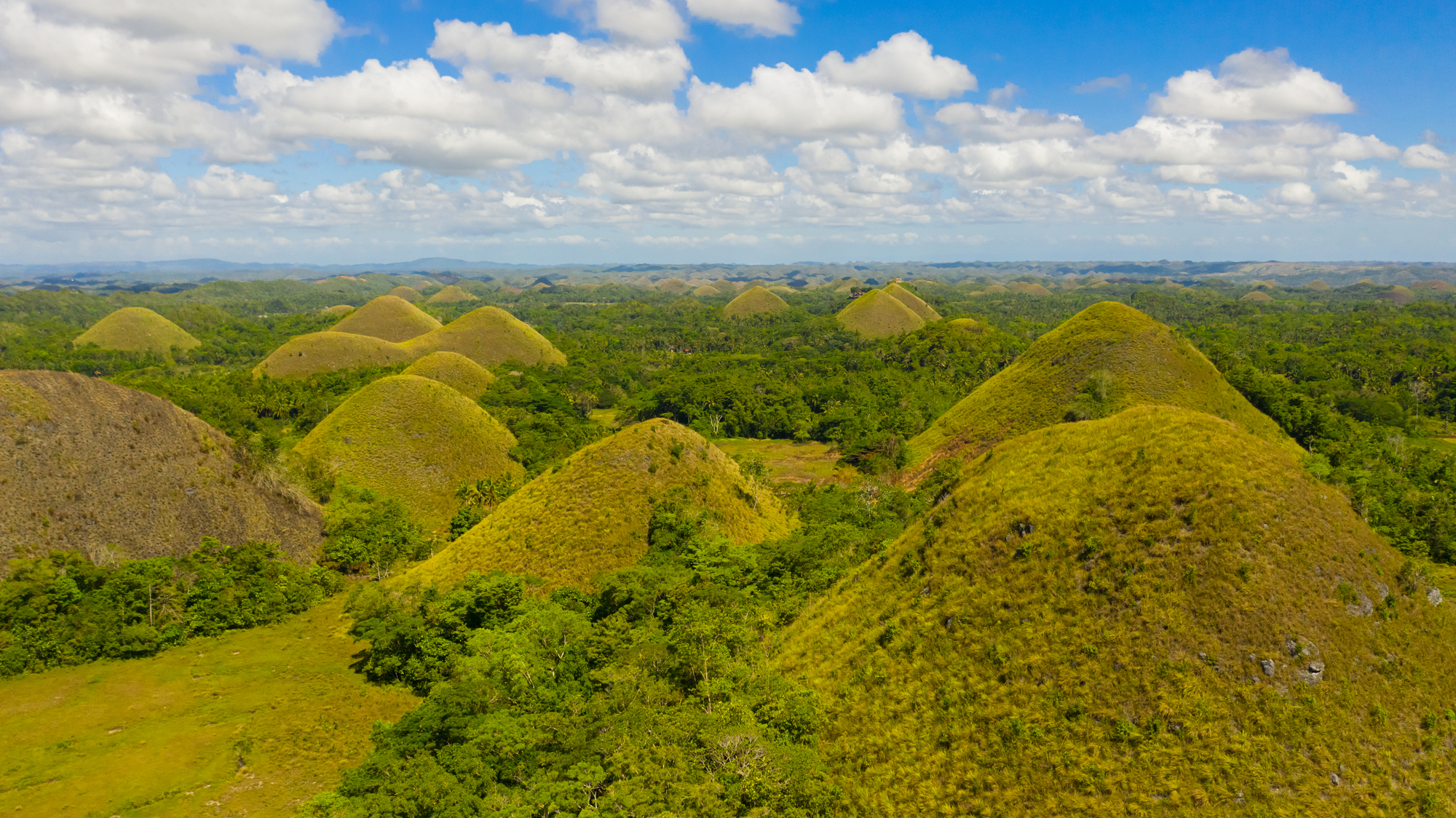
Imagine over 1,700 perfectly symmetrical hills, all about the same height, covered in grass that turns brown in the dry season – hence the name. They look like giant chocolate drops scattered across the landscape of Bohol.
These conical karst hills, ranging from 30 to 50 meters high, formed when sea levels dropped and exposed the limestone to erosion. Their nearly uniform shape is a rare example of karst topography called “cockpit karst.”
During the dry season, the grass covering the hills turns brown, creating the chocolate-like appearance that gives them their name. Local legend says they’re the tears of a heartbroken giant, though geologists prefer the less romantic explanation of marine limestone eroded by millennia of rainfall.
Pamukkale Travertine Terraces (Turkey)
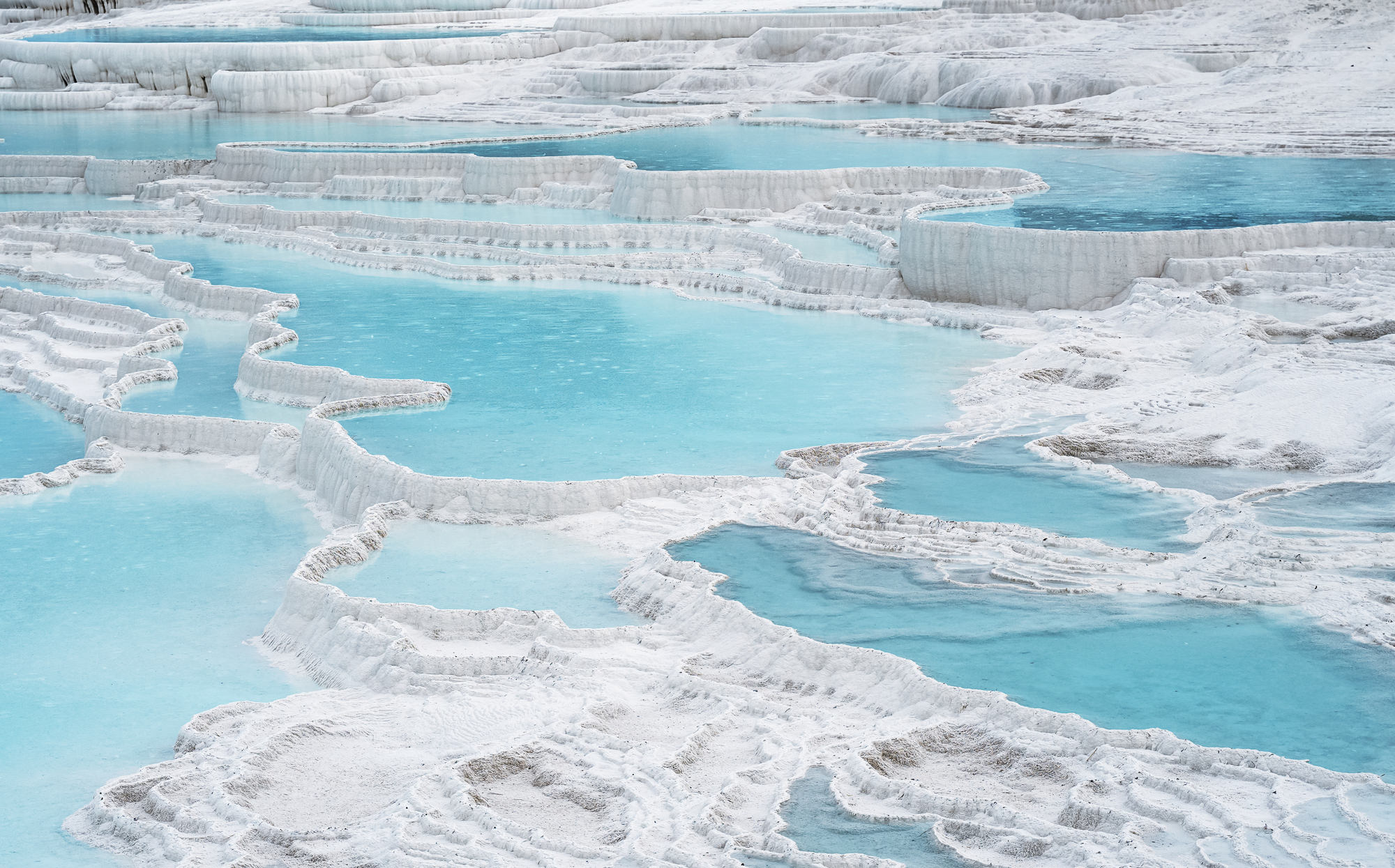
These white calcium carbonate terraces filled with thermal waters look like a giant’s wedding cake or natural infinity pools. The name Pamukkale means “cotton castle” in Turkish, and it’s easy to see why.
The terraces formed when calcium-rich thermal waters cascaded down the hillside, cooling and depositing calcium carbonate in a process that’s been ongoing for thousands of years. The water maintains a constant temperature of around 35 -100°C and is believed to have therapeutic properties.
Ancient Romans built the city of Hierapolis at the site to take advantage of these natural spa pools. The white travertine formations contain dozens of pools with crystal-clear blue water, creating natural infinity pools that predate Instagram by a few million years.
Spotted Lake (Canada)
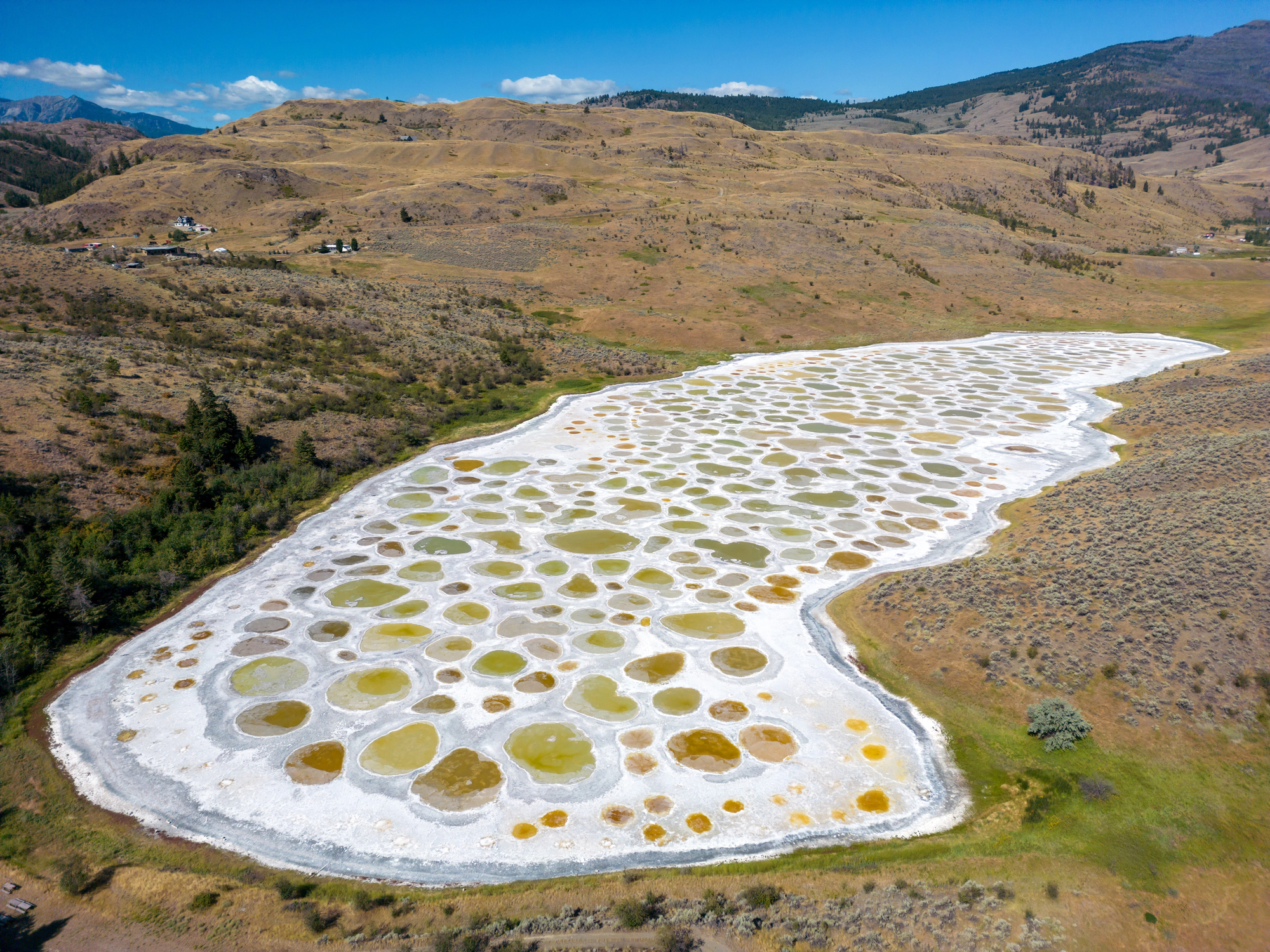
During summer, this lake in British Columbia transforms into a collection of mineral-rich pools in various colors, looking like a giant painter’s palette from above.
The lake contains some of the highest concentrations of minerals in any lake in the world, including magnesium sulfate, calcium, and sodium sulfates. As water evaporates during summer, these minerals form circles of crystallized deposits, each with different colors depending on their mineral composition.
The Okanagan First Nations people considered it a sacred site with healing properties. The spots can appear white, pale yellow, green, or blue, depending on the mineral composition and season.
Like Go2Tutors’s content? Follow us on MSN.
Salar de Uyuni (Bolivia)
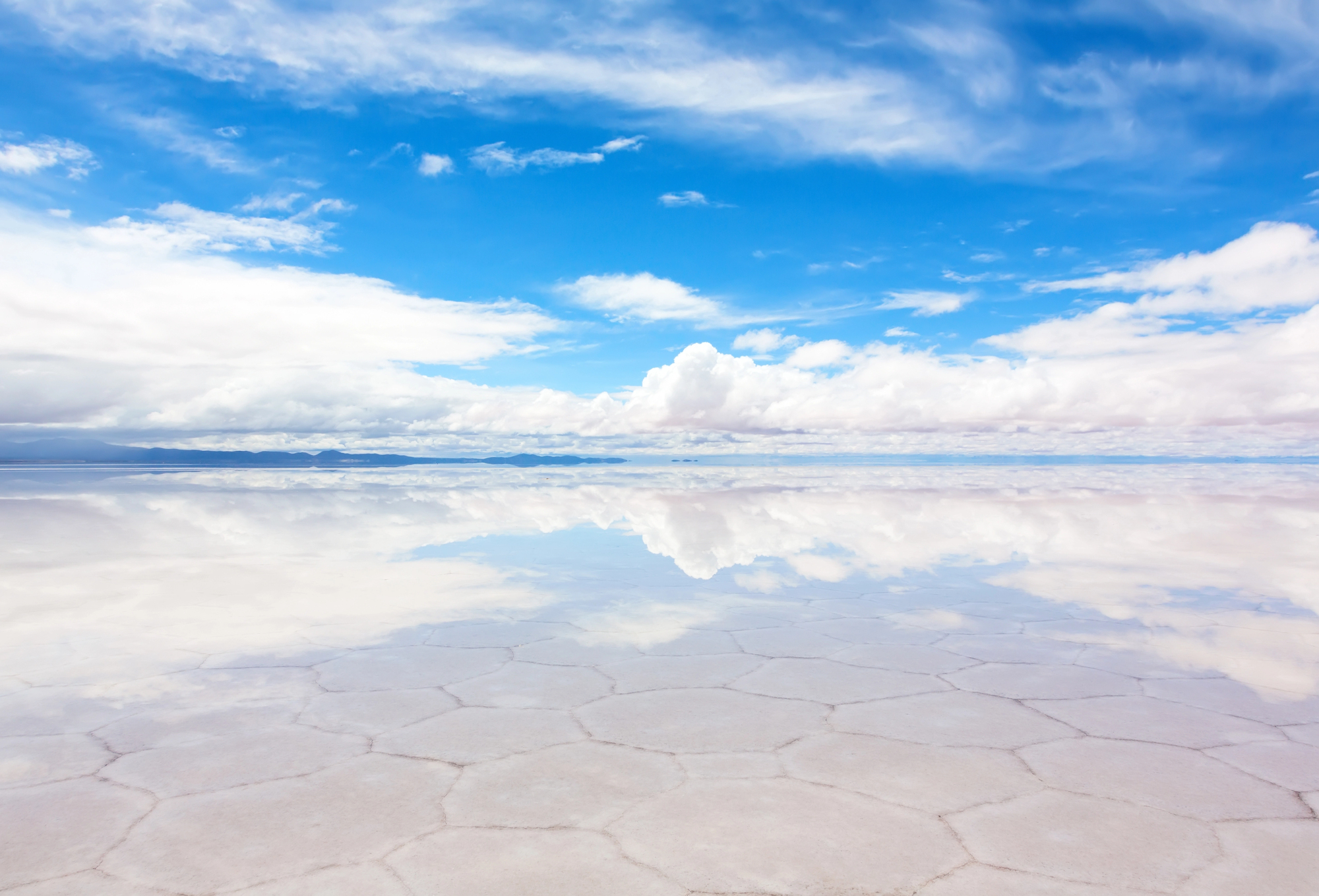
The world’s largest salt flat transforms into a perfect mirror during the rainy season, creating a landscape where sky and earth become indistinguishable. It’s like finding the world’s largest mirror in the most unexpected place.
This salt flat, covering over 10,000 square kilometers, was formed when prehistoric lakes dried up, leaving behind a salt crust up to 10 meters thick. During the rainy season, a thin layer of water transforms the surface into the world’s largest natural mirror, creating surreal reflections that make photography nearly impossible to orient.
The salt flat contains 50-70% of the world’s lithium reserves, making it not just beautiful but increasingly strategic in our battery-powered world.
Moeraki Boulders (New Zealand)
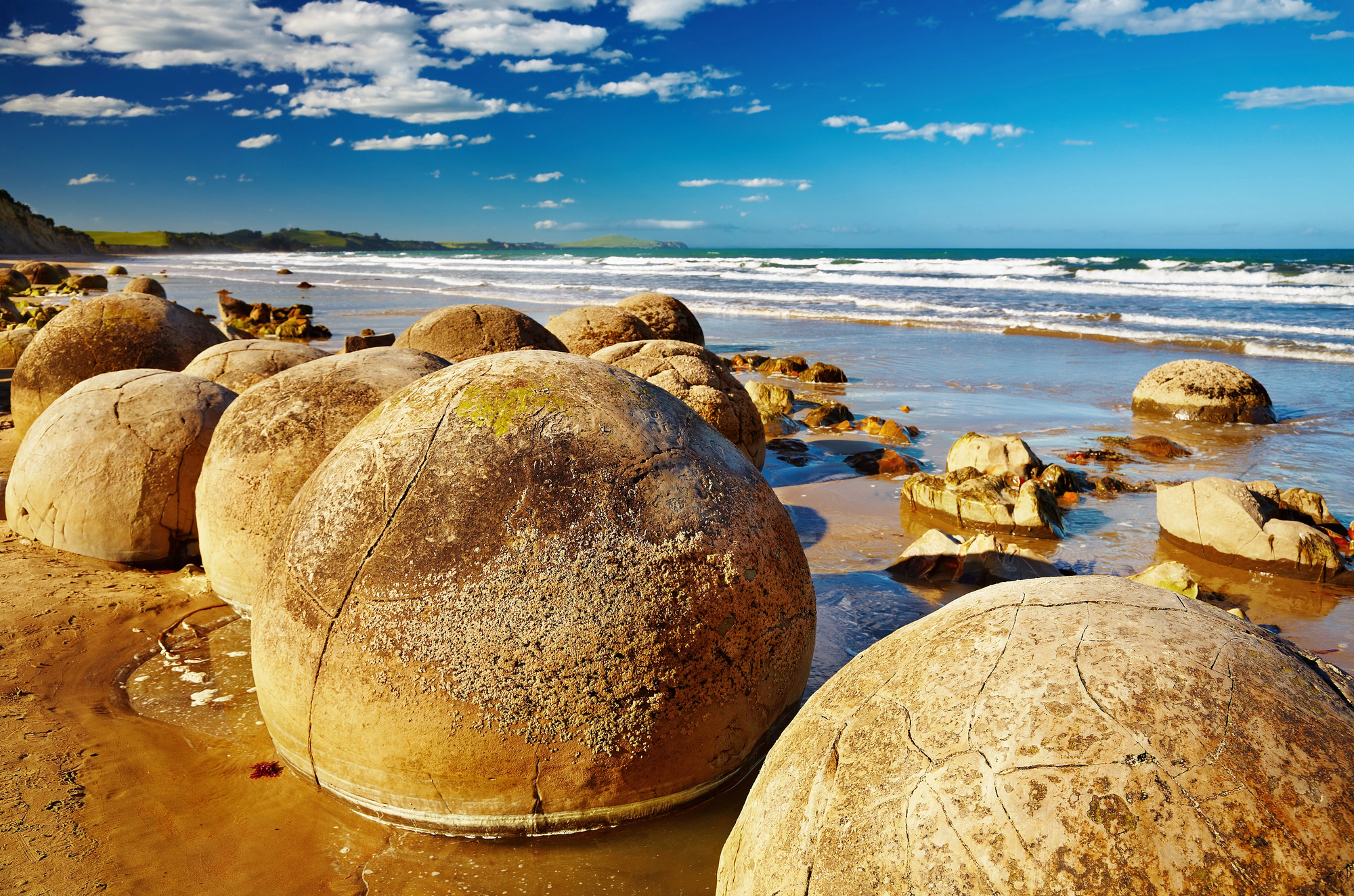
These perfectly spherical stones scattered along Koekohe Beach look like giant marbles left behind by playing giants.
More from Go2Tutors!

- Famous Battles: How Much Do You Really Know About U.S. History?
- Top 5 Most Important Skills, According To Harvard Business School
- How Well Do You Know 90s Pop Culture? Take the Quiz
- Master the Art of Public Speaking with These Expert Tips
- Think You Know Capitals? Put Your Knowledge to the Test
Like Go2Tutors’s content? Follow us on MSN.
